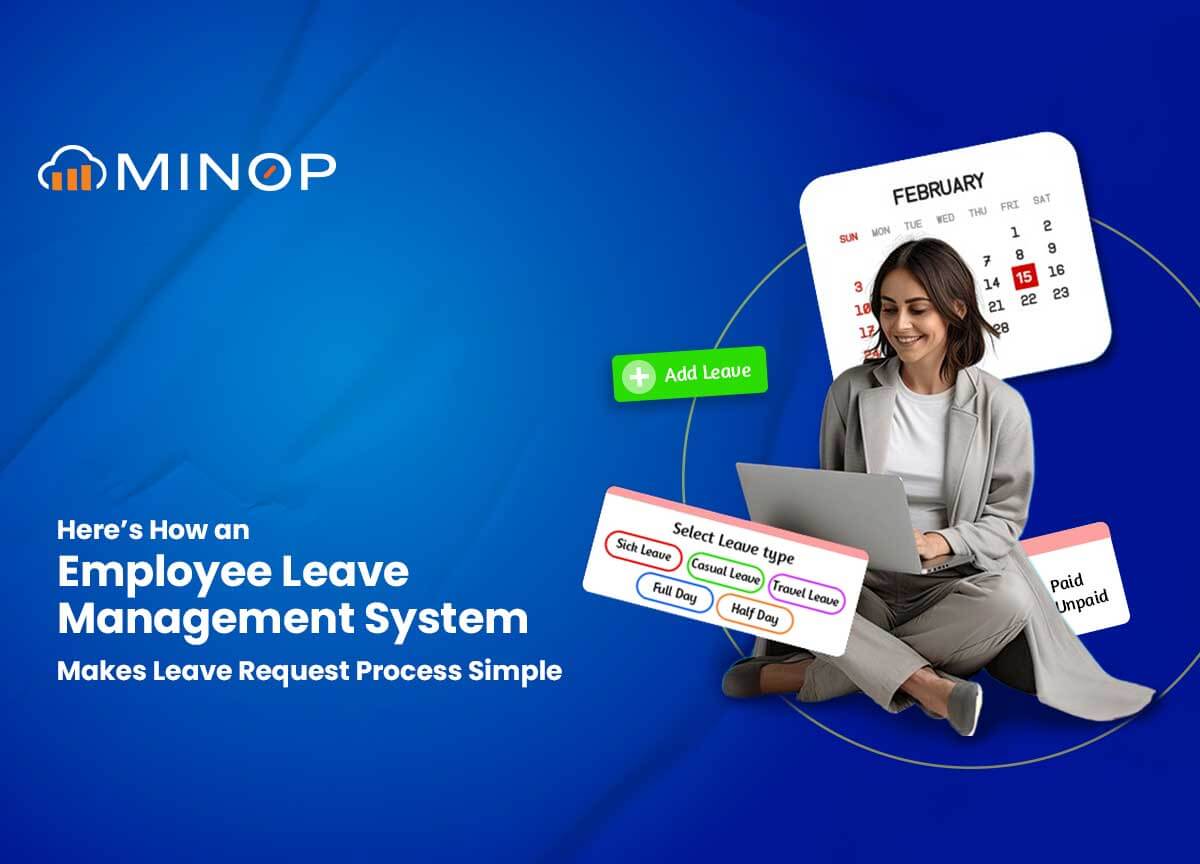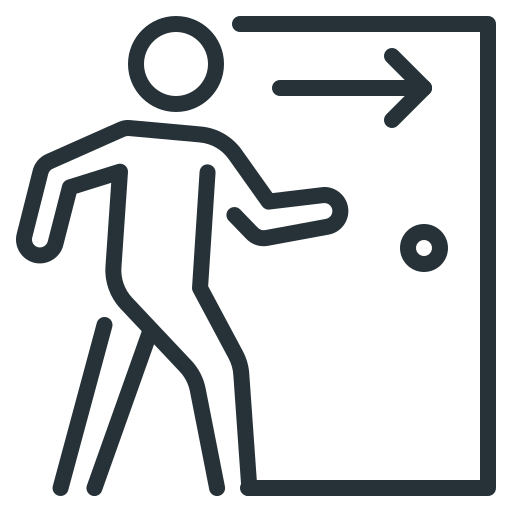What is Employee Leave Management System and How Does it Work?
Posted On:- 1 April, 2025 By:- Vaibhav Maniyar
Asking for a leave, whether it is one week prior or a day before through an employee leave management system always comes down to a talk that needs clarity, good manners, and a real reason for your request. Its quite natural to understand why this part is rarely talked about openly before hiring.
Many HR professionals give you a set sick leave and casual leave numbers for different needs. But when the actual time comes, they pressurize the employee to think again by giving some random reason why this is not a good time to take a leave, stalling the leave request until it moves further to another micromanager. No doubt, this is one of the many toxic traits of a company that always wants more for themselves and less for others.
This is where an employee leave management system steps in and makes everything so simple. An employee don’t even have to leave their seat hounding the HR office for getting approvals.
The system shows available leaves and sends your requests right to hiring managers. Whether they approve or deny is up to them, but the whole process is quick and clear, saving time and worry, boosting work, and making workers feel better.
What is an Employee Leave Management System?
An employee leave management system centralizes all data and helps with accurate payroll calculations. Many systems include a mobile app so managers can approve leave on the go. The system makes it simple to check who is off, when, and why. This helps not only managers but also coworkers, who should be aware of team absences.
Leave tracking is built into a shared calendar where absences are recorded. This calendar can be displayed on the main dashboard so employees can quickly see who’s away. When leave is handled manually, employees may submit requests on paper or via email. If requests pile up, managers might miss some, leading to frustration. Manual tracking can also result in poor record-keeping and compliance risks.
With a leave management system, employees submit leave requests digitally, and managers receive automatic notifications.
The Role of an Employee Leave Management System
As mentioned earlier, an employee leave management system steps in to solve the leave problems by offering customizable leave policies. An employee can choose the type of leave they are applying for based on the number of leaves they have. Whether its for casual leave, sick leave, birthday leave, or even travel leave. There are myriad of leaves one can account for based on company policies making everything smooth and transparent.
Policies that can be configured to match the company’s needs while still respecting the employee’s reality. Standard policies, if that’s what’s needed. Or an entirely new set built from the ground up. Moreover, having leave rules you can change to fit your needs is a game-changer for businesses stuck with old systems. Let’s understand the many roles of an employee leave management system in detail.

Custom Leave Policies
Companies can make many types of leave for their exact needs, like parent leave, death in the family time, or wellness days. Being able to set up leave rules means no more trying to make your needs fit rigid boxes – your rules match your company style perfectly. An online leave management system even gives you ready-made rules to start with, so you don't have to make everything from scratch.

Holiday Leave Management
Holiday lists are another pain point these systems fix easily. Making lists for different places ensures workers in various offices know when they can take time off. In a leave management system, adding special holidays gives staff choice while keeping work going. When you share your company holiday list through the leave management app, everyone knows the same thing, stopping the endless questions about coming days off.

Less Paperwork
Giving leaves based on set rules cuts down paperwork a lot. When workers and bosses handle leave requests right through the system, HR doesn't get stuck being the hold-up they often are. This freedom lets HR people focus more on big picture work rather than just being fancy calendar keepers. Managers can see patterns, plan for busy times, and make sure enough people are working. Year-end leave counting, which often causes big headaches, becomes smooth and right.

Employee Self Service
A self-help portal puts workers in charge of their time off without always needing help. They check their days, ask for time, and get okay without walking around with papers getting names. A critical feature of an employee self-service in an online leave management system is having separate options for leave management in the portal. See who is on leave, find your leave balance, ask for a leave, and even use it as a help-desk.

Main Dashboard and Report
The parts of an advanced employee leave management system make traditional ways look very old. An all-in-one dashboard gives quick sight into who's in, who's out, and what's coming up. Cloud systems mean access from anywhere, which is key in today's mixed workplaces. Moreover, easy reports turn complex time patterns into useful insights without needing a math nerd to figure out the numbers.

Tracking Leaves via Face Recognition Attendance Machine
A face recognition attendance machine stands at the entrance of the each department’s cabin where each employee goes out and comes in several times in a day. This helps the system to get a hold of the in and out-time after and during the lunch as well as storing attendance at the earliest time of the day.
Many companies now use face recognition attendance tracking machines to track who's in and who's out, adding more transparency in the process. These systems stop people from cheating and lying about time while showing real data about who's really at work. The good points of using a worker leave system go far beyond just being easy.
Leave days update on their own, so no more fights about how many days someone has left.
Real-time info ensures choices are made with today's facts, not last week's sheet.
The open and true nature of these systems builds trust between bosses and staff.
Everyone sees the same info, stopping claims of playing favorites.
You can understand more about the facial recognition attendance machine by several different vendors who specializes in security system manufacturing and distribution.
Maybe most useful is saving office time that can be used for growth tasks instead of paperwork. In the end, a good leave system doesn't just track time off; it changes how companies see worker well-being, turning what was once a needed evil into a smart move that boosts happy feelings and work at the same time.
Conclusion
A modern-day leave management app like MINOP is flexible and adaptable, something that fits the way people actually work rather than forcing them into rigid, outdated leave management system. Because an employee’s need for leave isn’t a fixed, predictable occurrence. It shifts. It depends on life, on circumstances, on things no policy could ever fully account for. And yet, too often, leave management is treated as an administrative obstacle, a bureaucratic formality that creates more problems than it solves.
FAQ

How to Tackle the Problem of Employees Learning and Leaving?
Set up a structured one-on-one discussion with a senior HR professional who can patiently address all the questions a new joiner might have. If an employee decides to leave after serving a few years in the company, the best course of action for HR is to conduct a thorough “root cause analysis” to identify the underlying issue and understand where the problem lies.

What is the Best Employee Attendance App?
Minop stands out as the best employee attendance app due to its intuitive UI/UX, seamless screen transitions, and glitch-free performance. The home screen allows employees to view their check-in and check-out times, along with the time remaining within the company premises. With the Minop mobile app, employees can easily track their attendance reports, which are automatically updated daily.

Why Should I Choose Leave Management Software?
Managing a business, whether using a paper-based or cloud-based system, requires a reliable leave management solution. Every employee deserves transparency regarding their leave balance, which boosts morale and ensures better performance. A leave management system eliminates confusion by providing real-time information on remaining leaves and pending applications.

Is There Such a Thing as “Planned Sick Leave”?
Yes! Planned sick leave is useful when an employee has accumulated unused sick days over time. These leaves can be availed collectively when needed. With Minop's advanced UI architecture, the system automatically marks the leave as paid once the employee selects the “sick leave” option under the leave type. This automated process simplifies leave tracking and ensures accurate record-keeping.

Who Keeps Track of Employees' Attendance?
Attendance tracking depends on the size of the workforce. For smaller teams without leave management software, attendance can be tracked manually. However, for larger companies, a system like Minop automatically records absences, updates the leave balance, and reflects the data on the dashboard. This makes it easy for both the employee and employer to track attendance and leave records effortlessly.

Comments